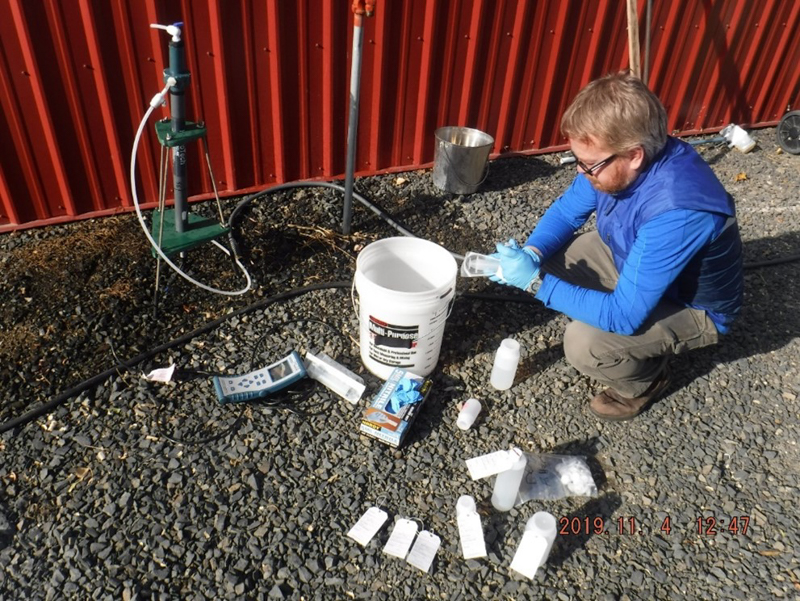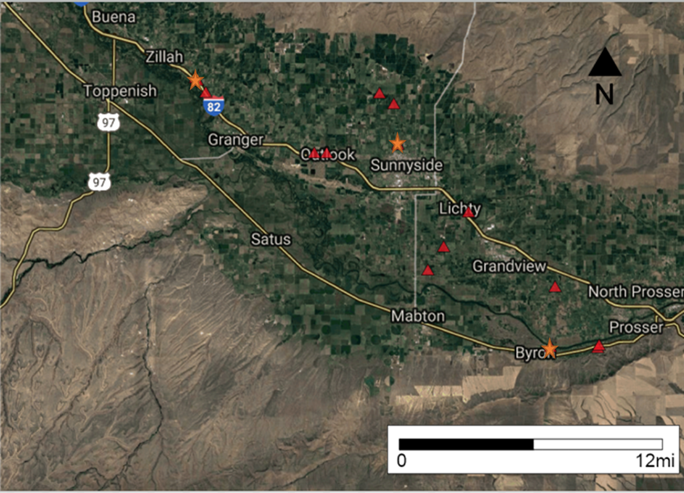
Clean, safe drinking water is important for everyone to live healthy lives – but it’s especially critical in the Lower Yakima Valley, where many people rely on private wells to get water for their homes, families, and pets.
In 2019, a local environmental group believed Lower Valley drinking water wells contained dioxins, a chemical harmful to human health. We decided to conduct a study to determine if dioxin was present, using extensive quality assurance methods to ensure our data was credible and accurate.
Over the last two years, we partnered with the Yakima Health District to test 15 wells between Zillah and Prosser. Here’s an overview of our results.
Long story short: We found no evidence of dioxin contamination in the Lower Valley.
What are dioxins?
Dioxins are pollutants that linger in the environment for a long time without breaking down. They can result from forest fires, waste burning, and industrial activities. They accumulate in the food chain – usually in meat, dairy, fish, and shellfish – and can also get into drinking water. These chemicals are highly toxic and have a range of negative health impacts, from reproductive and developmental harm to hormone interference and cancer.
Testing for dioxins and harmful chemicals in drinking water
Wells sampled in Nov. 2019 & April 2021. Orange stars are wells we sampled that were also tested by the environmental group. Red triangles are wells we sampled nearby to tell us if a problem exists.
We initiated our study after learning a local advocacy group believed dioxin might be in Lower Valley groundwater. We tested 15 wells, including three wells the advocacy group tested. Those 15 wells represented a snapshot of the Lower Valley designed to tell us if a problem exists. In this process, our top concern was ensuring people had safe drinking water.
Our study didn’t just test for dioxins. We also tested for nitrates, lead, and arsenic to examine wider concerns about contamination.
What results did we find?
We did not find dioxin in Lower Valley groundwater, and none of the homes we sampled from had harmful levels of lead or arsenic.
Only one well showed elevated dioxin levels that exceeded the standard for drinking water. Further inspection found that this well was poorly constructed, and a nearby burn pit caused dioxins to end up in the well. Since this appears to be an individual issue, we’re working with the homeowner to find a solution.
We already know nitrates are an issue in some areas of the Lower Valley. With the collaboration of other environmental and health agencies, we’re undergoing efforts to reduce nitrate contamination in groundwater. This is part of a broader ongoing project to monitor nitrate levels in 170 wells throughout this area. Ecology will continue to address the issue with help from our community, public health, and agricultural partners.
Ecology staff test a private drinking water well for nitrate levels, as part of an ongoing project to address nitrate contamination in the Lower Valley.
What’s next?
Sampling your well is the best way to find out what’s in it, and we recommend annual tests to ensure your water is safe.
If you have a drinking water well, maintenance and sampling are your responsibility. The state Department of Health and federal Environmental Protection Agency both have more information about well construction and sampling.
And lastly, don’t burn trash, especially near wells. Burning garbage is illegal because it can pollute drinking water, threatening both human health and the environment. Following this rule and repairing old wells can help keep drinking water safe – for you and your neighbors.




